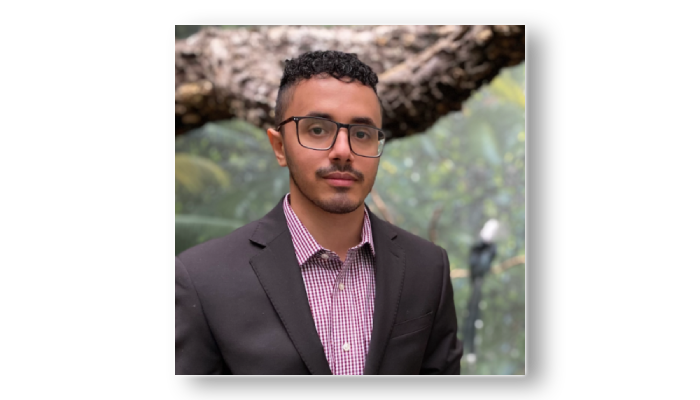Beyond Medications: Exploring Virtual Reality Use in Non-Pharmacological Pain Management for Wound Care
April 21, 2023
Introduction
Pain is an important factor when performing wound care procedures, especially dressing changes, which account for moderate to severe pain in 74% of wound care patients.1 Traditional pain management methods commonly employed, such as opioids, may not always produce a desirable result or be effective due to potential side effects, addiction risk, and delayed wound healing.2 A current, non-pharmacological pain management approach emerging as a promising alternative is Virtual Reality (VR).3
What is it?
Virtual reality works by preoccupying patients in a simulated environment meant to distract them from reality. In many cases, such as dressing changes and debridement procedures, it has reduced anxiety, stress, and physical discomfort.3 VR technology can provide various sensory experiences, such as pleasant and peaceful images, sounds, and tactile feedback. This experience can help distract and engage the patient’s attention as well as promote relaxation. This level of distraction is theorized to decrease patients' perceptions of painful stimuli.3 Through what has been termed the distraction phenomenon, VR is theorized to reduce the neural signature of pain in the brain, separating this pain management method from placebo.3 There are different types of VR technology. For example, some VR applications involve goggles or headsets to immerse patients in a virtual environment. Other applications use haptic feedback, which provides a touch-based sensation to the patient.4 Others can also be customized to meet the patient’s needs and preferences. In terms of function, VR can be immersive, semi-immersive, or non-immersive.3 As noted previously, the multisensory experience occupies the patient’s attention and shifts the focus away from the pain, thus reducing their perceived discomfort. As a flexible and accessible intervention, VR can be tailored to the patient’s needs by choosing from various virtual environments. Popular 3-dimensional environments include a virtual lakeside campground, a prehistoric landscape with dinosaurs, and a tranquil ocean to swim in with dolphins.5
So What?
One may ask, “How does a headset or goggles take away physical pain?” In addition to the distraction phenomenon,3 it is crucial to understand the correlation between stress/anxiety and the intensity of pain felt by the patient. These negative emotions increase cortisol and catecholamine levels, subsequently impacting the patient’s immunity and oxygen levels in the body, hindering wound healing, and intensifying pain.5,6,7 VR interventions were found to be effective in reducing anxiety, modulating the brain’s pain-processing pathways, and distracting patients from pain by engaging their attention with an immersive environment.3 From my clinical experience, I think that the positive effects of VR for pain management may be linked to the activation of the brain's reward system, potentially leading to the release of dopamine. To me, there’s no clear evidence to imply that perceiving VR as rewarding is more common in patients susceptible to placebo effects. However, it’s possible that VR's ability to adjust the perception of pain could contribute to its effectiveness in pain management for those individuals who are more sensitive to psychological interventions. Thus, while some studies suggest a link between VR and the brain’s reward system, further studies are necessary to grasp how this system interacts with VR, dopamine, and individuals susceptible to the placebo effect.8
Conclusion
As VR technology continues to evolve and become accessible in a variety of clinical settings, it is anticipated that we may discover new ways that it can improve patient outcomes and augment the quality of care. Since VR has no known side effects compared to opioids and other medications, it is a valuable non-pharmacological approach to pain management that is worth trying.3
References
- Fiala CA, Abbott LI, Carter CD, et al. Severe pain during wound care procedures: A cross-sectional study protocol. J Adv Nurs. 2018;10.1111/jan.13699. doi:10.1111/jan.13699
- Shanmugam VK, Couch KS, McNish S, Amdur RL. Relationship between opioid treatment and rate of healing in chronic wounds. Wound Repair Regen. 2017;25(1):120-130. doi:10.1111/wrr.12496
- Czech O, Wrzeciono A, Batalík L, Szczepańska-Gieracha J, Malicka I, Rutkowski S. Virtual reality intervention as a support method during wound care and rehabilitation after burns: A systematic review and meta-analysis. Complement Ther Med. 2022;68:102837. doi:10.1016/j.ctim.2022.102837
- Shazhaev I, Mihylov D, Shafeeg A, et al. A Review of Haptic Technology Applications in Healthcare. J Applied Sciences. 2023;13(2). doi:10.4236/ojapps.2023.132013
- He ZH, Yang HM, Dela Rosa RD, De Ala MB. The effects of virtual reality technology on reducing pain in wound care: A meta-analysis and systematic review. Int Wound J. 2022;19(7):1810-1820. doi:10.1111/iwj.13785
- Exploring the effects of pain and stress on wound healing. Advances in Skin & Wound Care. 2012;25(1):45-46. doi:10.1097/01.asw.0000410690.67728.35
- Serena T, Yaakov R, Aslam S, Aslam R. Preventing, minimizing, and managing pain in patients with chronic wounds: challenges and solutions. Chronic Wound Care Manag Res. 2016;3:85-90. doi:10.2147/cwcmr.s85463
- Kaimara P, Oikonomou A, Deliyannis I. Could Virtual reality Applications pose real risks to children and adolescents? A systematic review of ethical issues and concerns. Virtual Reality. 2022;26:697-735. https://link.springer.com/article/10.1007/s10055-021-00563-w
Further Reading
- Riva G, Wiederhold BK, Mantovani F. Neuroscience of Virtual Reality: From Virtual Exposure to Embodied Medicine. Cyberpsychol Behav Soc Netw. 2019;22(1):82-96. doi:10.1089/cyber.2017.29099.gri
About the Author Thanoon Thabet, BSN, RN, WTA-C is an early career Clinical Nurse who holds a Wound Treatment Associate certification (WTA-C) through the Wound, Ostomy, and Continence Nursing Certification Board (WOCNCB). His clinical focus is adult-geriatric medical and surgical nursing, with plans to pursue future full tri-specialty certification in WOC Nursing. He values nursing mentorship and is passionate about engaging in scholarship activities such as evidence-based practice, academic advancement, and nursing leadership. The views and opinions expressed in this blog are solely those of the author, and do not represent the views of WoundSource, HMP Global, its affiliates, or subsidiary companies.
The views and opinions expressed in this content are solely those of the contributor, and do not represent the views of WoundSource, HMP Global, its affiliates, or subsidiary companies.









